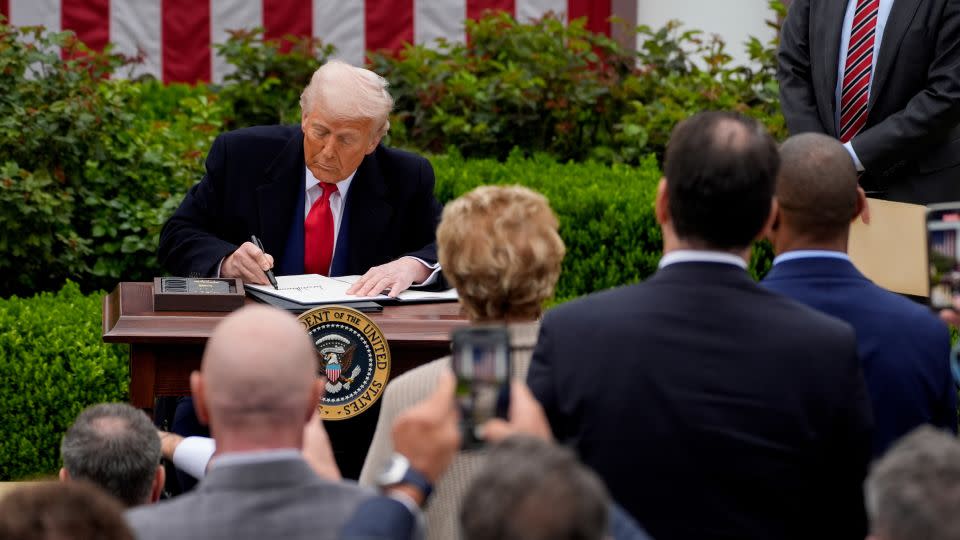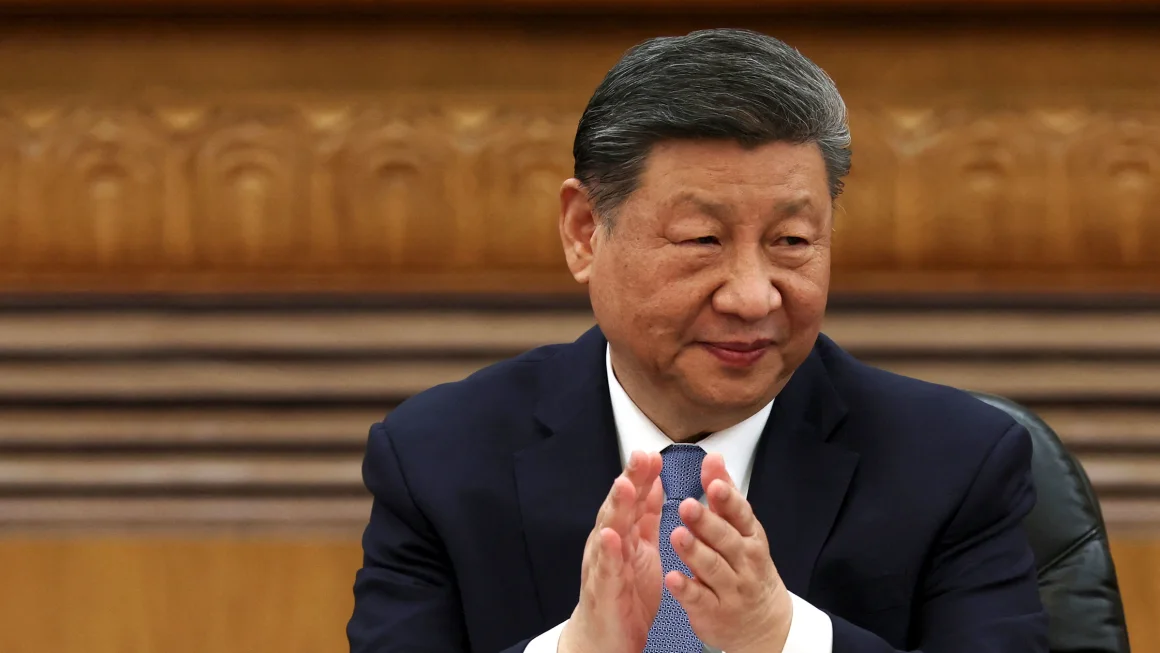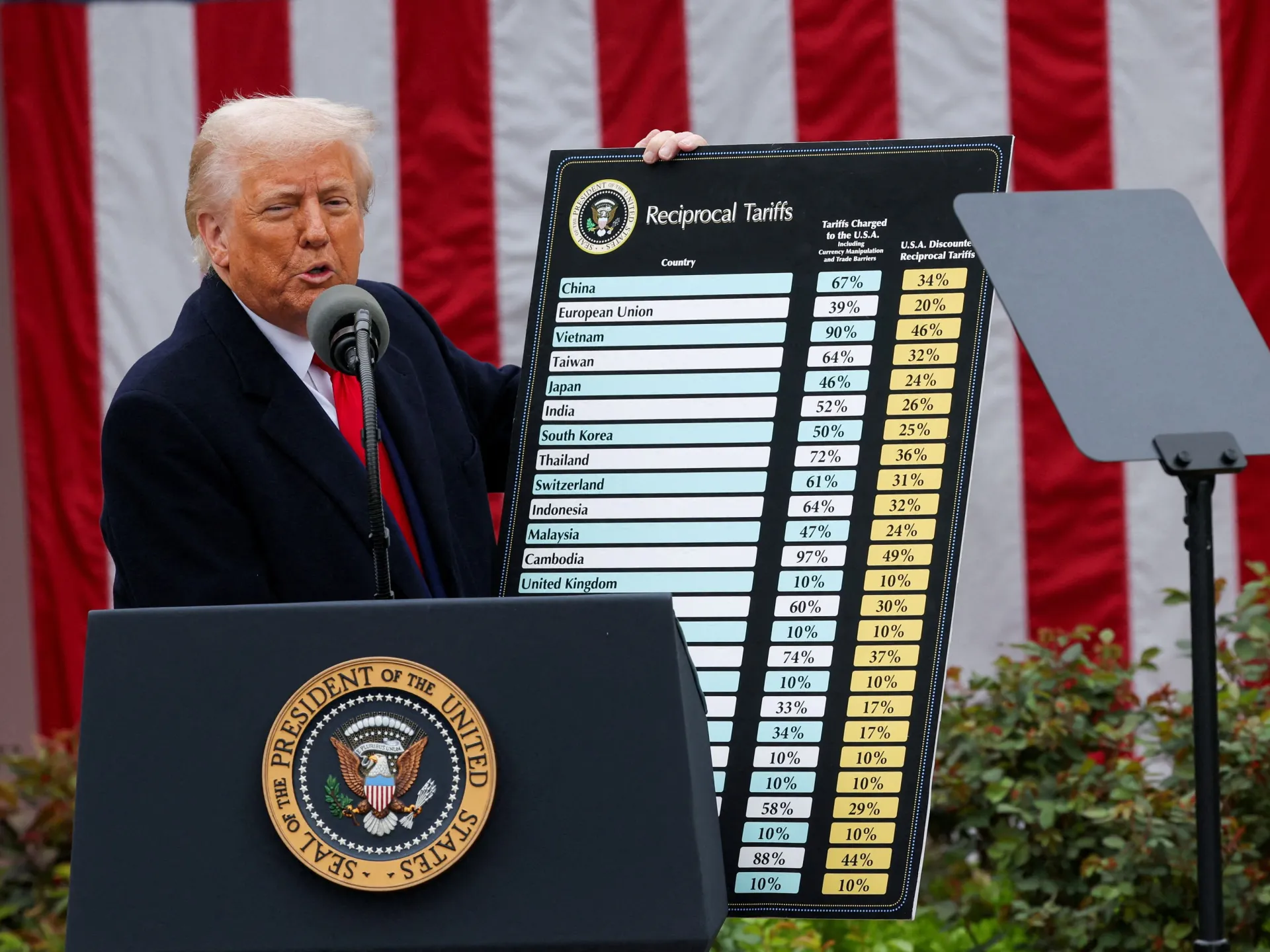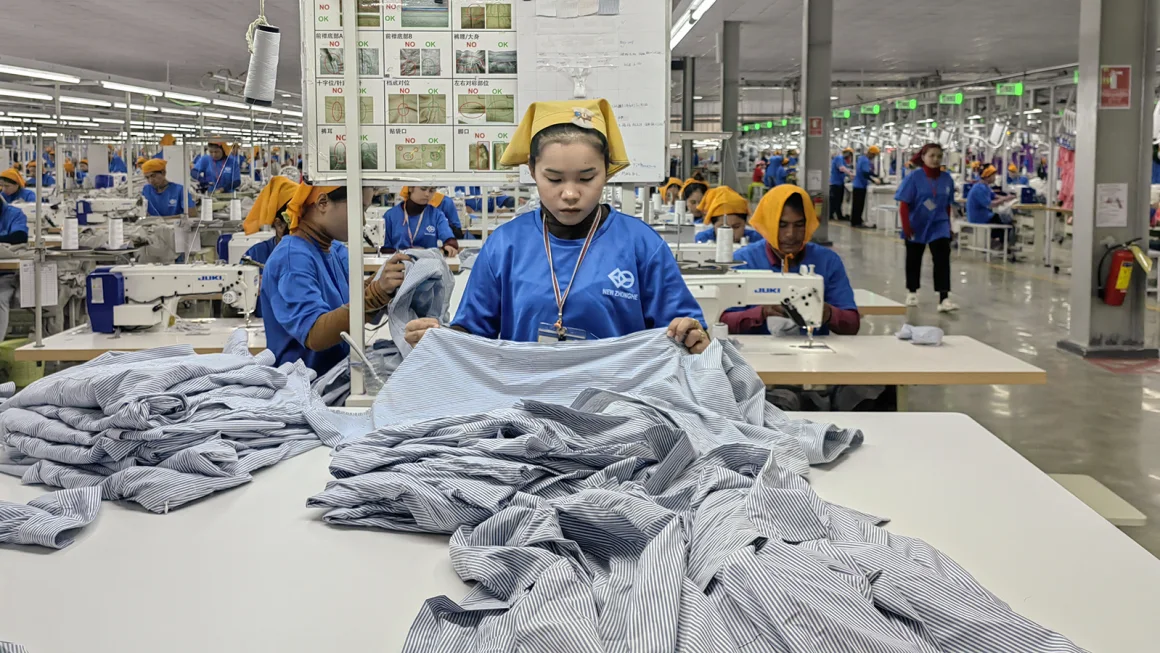
On Wednesday, President Donald Trump introduced a bold new round of tariffs, significantly escalating the trade conflict, which he dubbed a “declaration of economic independence.” While this aggressive move is aimed at tackling what he perceives as unfair trade practices, many economists warn that it could lead to higher costs for American consumers and slow economic growth.
Exercising his powers under a national emergency, Trump implemented a 10% tariff on all imports into the U.S. Additionally, goods from approximately 60 countries or trading blocs that have a large trade deficit with the U.S. will face even steeper tariffs, including 34% for China and 20% for the European Union.
This latest set of tariffs marks the most significant increase in U.S. tariffs in almost a century, surpassing even the Smoot-Hawley Act of 1930. However, the tariffs are just the beginning, as further sector-specific tariffs are expected soon, according to White House officials.
Here are the major points to take away from Trump’s sweeping tariff announcement.
New Tariffs Are in Play
Trump’s so-called “reciprocal tariffs” are intended to match the tariffs that foreign countries impose on U.S. goods. However, these will not fully mirror the tariffs from other countries unless they are already set at a 10% tariff by the U.S. Furthermore, the new tariffs won’t be layered on top of existing duties.
“We’ll charge them about half of what they’ve been charging us,” Trump explained during his announcement. For example, the new duty on goods from the European Union will be 20% rather than matching the EU’s 39% tariff on U.S. exports. China, which previously faced a 20% tariff for its involvement in the fentanyl trade, will now face a 34% tariff, bringing the total to 54%.
The baseline 10% tariff is set to take effect immediately, while additional tariffs on certain countries will kick in on April 9. These new duties won’t apply to previously enacted tariffs on steel, aluminum, or cars.
The 25% tariffs on Mexico and Canada for non-compliance with the U.S.-Mexico-Canada Agreement (USMCA) will remain until issues related to fentanyl and illegal immigration are addressed. Afterward, Mexico and Canada will revert to the new tariff approach for other nations.
Further tariffs on semiconductors, pharmaceuticals, and critical minerals are reportedly in the works, with details to be released soon.
Foreign Responses Expected
Several nations, including long-standing U.S. allies, have expressed intentions to retaliate against these tariffs, potentially triggering a full-scale trade war. The International Chamber of Commerce has warned that this escalation could pose a significant risk to the global trading system.
China, Japan, and South Korea have already indicated they will respond with tariffs of over 20%, in alignment with the U.S. actions. Mexican President Claudia Sheinbaum announced a broad economic plan to safeguard the country’s automotive industry, while European leaders, including Swiss President Karin Keller-Sutter, have pledged to formulate countermeasures after studying the impact on their economies.
Canadian Prime Minister Mark Carney also criticized the move, stating that the tariffs would drastically alter the global trading landscape, vowing to take retaliatory action.
U.S. Treasury Secretary Scott Bessent urged other countries not to rush into retaliation, warning that such moves could further escalate tensions.
Market and Political Reactions
The response to Trump’s tariff announcement was swift, with U.S. stocks falling sharply in after-hours trading. Dow futures dropped by more than 900 points, or 2.19%, and both S&P 500 and Nasdaq futures saw significant declines.
Politically, Trump’s move has sparked backlash, especially from Democrats. House Minority Leader Hakeem Jeffries condemned the tariffs, stating, “Republicans are crashing the American economy in real time and driving us to a recession.”
Rep. Greg Meeks, a top Democrat on the House Foreign Affairs Committee, announced plans to force a vote on the tariffs in the coming days, bypassing GOP leadership.
Impact on U.S. Businesses
U.S. businesses are preparing for the consequences of these new tariffs. Importers will likely face higher costs, which are often passed on to consumers. Many companies are already feeling the pressure from earlier tariff hikes on materials like steel and aluminum.
Benjamin Colvin, president of Devil’s Foot Brewing, a North Carolina-based company, expressed concern over the rising production costs and their potential impact on the business.
Tariffs will also affect sectors like grocery stores, which rely heavily on global supply chains. Leslie Sarasin, CEO of The Food Industry Association, warned that the tariffs could disrupt the food system, which depends on imported goods like bananas and seasonal products, thereby raising costs for American consumers.









